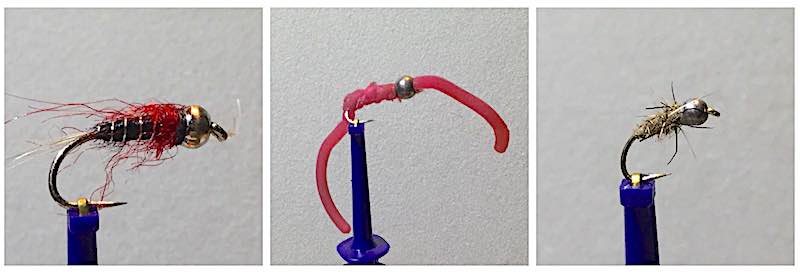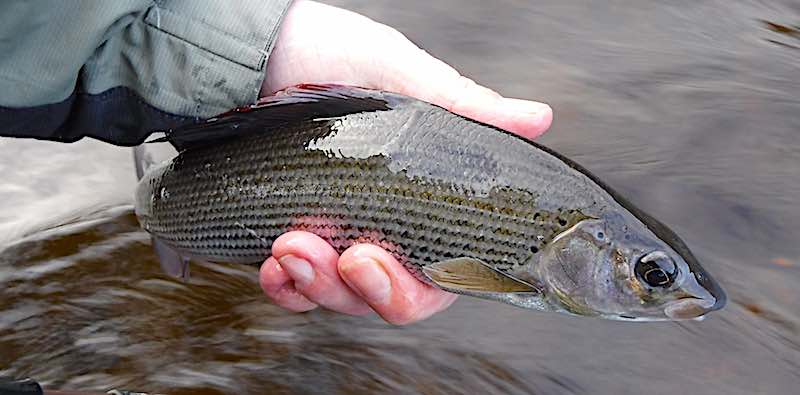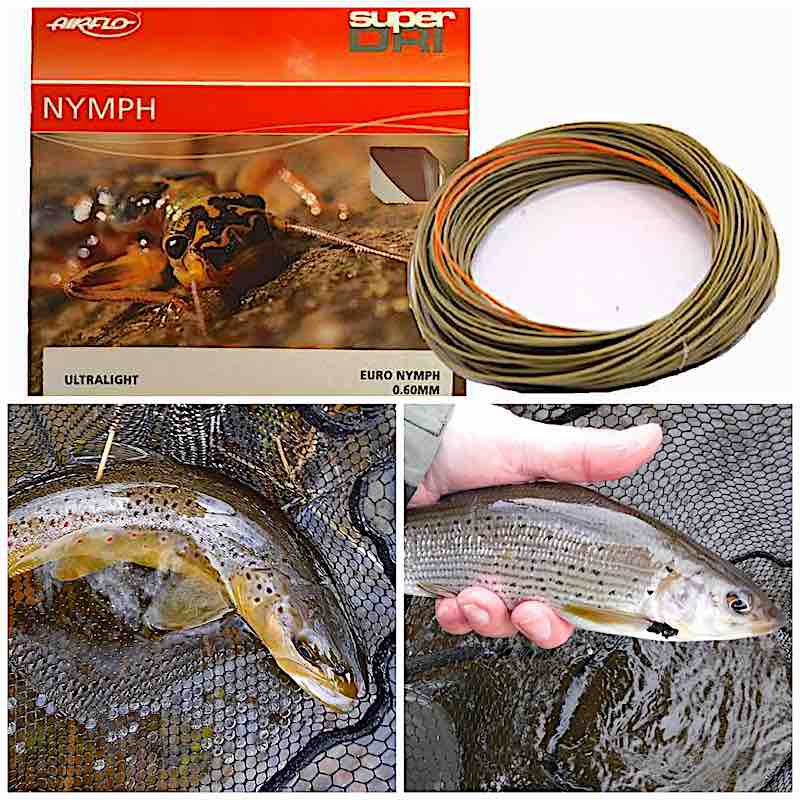At Christmas, I treated myself to an Airflo Euro nymph line which is a specialist fly line for short-range nymphing (Czech and Euro nymphing) because I wanted to see if it would help improve my fishing results on the Welsh Dee.
A Google search identified a number of specialist lines available from a range of manufactures (Airflo, Rio, Cortland, Orvis etc.). However, based on my budget and customer reviews I chose the reasonably priced Airflo SNF Euro Nymph (0.6mm) in Camo-olive/FL.orange.

The Airflow fly line arrived promptly from Fishtec and I wasted no time in examining it. The line felt great, virtually no coil memory and the neatly, formed loops at both ends give you the choice of easily attaching the leader to either the camo-olive or Fl.orange end. I loaded the line onto my reel with the leader attached to the Fl.orange end because it’s easier to detect takes in difficult light conditions with that arrangement.
Why did I think a specialist fly line would improve my fishing?
My reason for this fishing line upgrade was that with my standard dry fly line accurate control the nymphs in windy conditions is difficult. Therefore, I wanted to determine if a specialist line would improve nymph control, bite detection and as a result increase the number of fish caught.
Airflo Euro Nymph line (0.6mm) – initial test:
It wasn’t long before I was able to test the line because it was very windy on my next trip to the Welsh Dee (gusts of 15-20mph). I knew a shoal of grayling had taken up resisdence in the Top Pool, thus providing a good place to test the Aiflo SLN Euro Nymph line.
The river was running clear and close to it summer level (0.5m Manley Hall gauge); under these conditions grayling tend to be in faster water. Therefore, I started fishing the upper section of the pool with a team of Czech nymphs, spaced 18” apart on 4lb fluorocarbon (point: size 12, red collar black nymph 3.5mm tungsten bead; middle dropper: size 14, pink squirmy worm 3mm tungsten bead; top dropper: size 16, Hare’s Ear with 1.5mm tungsten bead).

In the gusty wind, my first impression was that casting and line control during drifts were significant easier with the Airflo euro nymph than my standard dry-fly line. In addition, line sensitivity was excellent; I could easily feel the nymphs bouncing along the riverbed. Then I felt a take and on lifting the rod tip, I was immediately in contact with my first grayling on the new line.

Fishing up through the deeper gullies behind the submerged boulders produced one grayling on the Hares Ear. Then I fished back down through the fast water towards the deeper water, under the large on the far bank. This produced a couple more grayling that fell for the pink squirmy worm.
Second test of the Airflo SLN Euro Nymph line:
A couple of weeks later, I was able to further test the Airflo Euro Nymph line, during a short fishing session on Duncan’s Pool. The Welsh Dee had just started to run off after a recent spate but was still coloured to about 2ft visibility.
I started fishing the run into the body of the pool with a team of Czech nymphs using the Airflo Euro Nymph line (point: size 10, pink nymph 3.5mm pink tungsten bead; middle dropper: size 12, red collar back nymph with a 3.5mm silver tungsten bead; top dropper: size 12, pheasant tail nymph with a 3mm copper tungsten bead).

Fishing out from the margin to the centre of the river and then back to bank, I worked my way down through Duncan’s Pool. Again, it was easy to cast and control the drift of the nymphs with the Airflo SLN Euro Nymph line. There was no need for line sensitivity for the first take, because it nearly pulled the rod out of my hand as the nymphs swung round to the dangle. Unfortunately, while trying to get the fish under control it threw the hook, which was my own fault for being too impatient!
Fishing on produced another violent take but this time I was more careful and despite the trout’s aerobatic display it was safely to the net. I estimated the over-wintered brown trout to be over a pound and later in the year when its fatten up it might be in the 2lb bracket.

I fished on down through the pool and this produce another brown trout and a couple of grayling. All of which fell of the pheasant tail nymph with the 3mm copper tungsten bead.

Overall conclusion of the Airflo Euro Nymph line (0.6mm):
In conclusion, after two fishing session I was very pleased with my new Airflo SLN Euro Nymph line. It is much easier than my standard dry fly line:
- to control and cast the nymphs, especially when it’s windy;
- very sensitive – easy to feel the nymphs bouncing along to riverbed;
- and detect fish taking the nymphs.
Therefore, the Airflo Euro Nymph line (0.6mm) is now part of my standard fly fishing tackle.
The only potential downside that I need to explore is when you want to travel light with one rod & reel can you cover the three main fly fishing methods (dry, wet & nymphing) with the Airflo SLN Euro Nymph line. However, I plan in the future to see if it’s possible to use this Airflo Nymphing line to fish a dry fly.
Tight line until next time, Andrew
PS. It would be great to hear your thoughts on using a specialist line for Czech/Euro nymphing. Which line do you use?

Hi Adrew I use the snowbee nymph line, great for nymphing I also find on those days when it’s windy they it’s better at casting a heavier fly or team of flys (well it does with my limited casting ability) I also find it capable of fishing the nymph or a quick change to a dry fly. Great post will wait to hear your thoughts on it’s dry fly use
Hi Rob,
Thanks for your comments on the snowbee nymph line. The weather has turned warmer over the last few days and if I see any olives hatching I might have a play trying to use the Airflo nymph line with the dry fly. Cheers, Andrew
I note that the line comes in size 0.6mm rather than line weights. Does that mean “one size fits all ? I have rods from 6 weight down thro 5, 4, 3. I was thinking of using it on my 10ft 6wt as I don’t possess a 10ft 3wt.
Hi Rick,
The line is designed for a 3wt rod. You probably will be able to fish with it on your 6wt rod but your going to lose sensitive. Cheers, Andrew